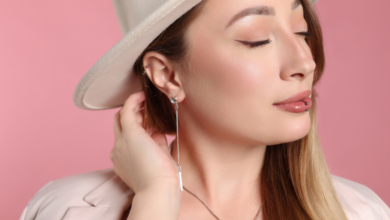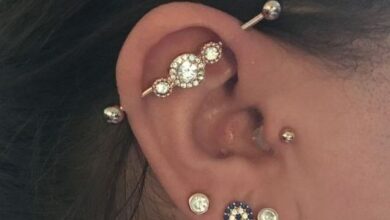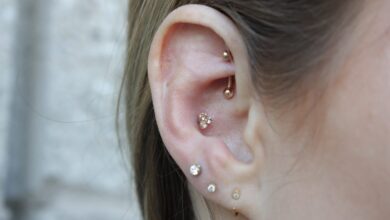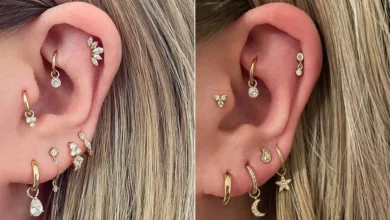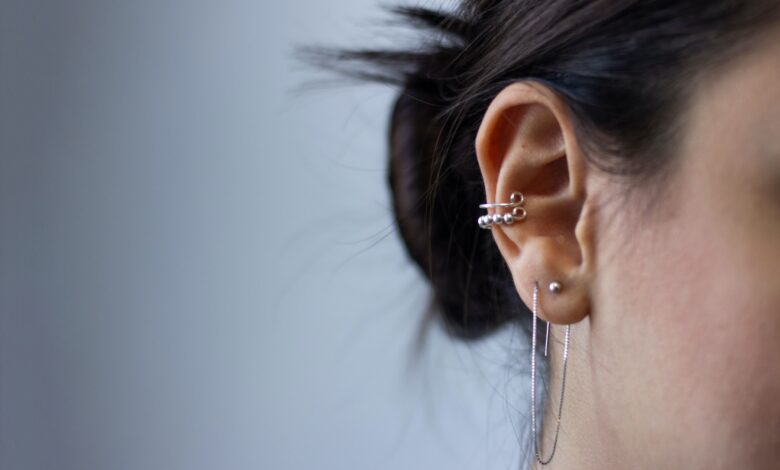
So you’ve finally made the decision to get a piercing at stylish.ae – congratulations! Now, you’re probably wondering what to expect in the first month after getting pierced. Well, fear not! In this article, we’ll walk you through the entire process, from the initial piercing to the aftercare and the healing process. We’ll provide you with all the information you need to ensure a smooth and comfortable experience. So sit back, relax, and let us guide you through this exciting journey!
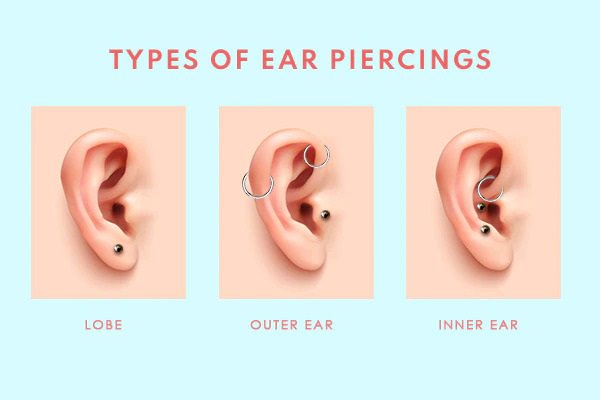
Day 1: Immediately After the Piercing
The piercing process
Congratulations on getting your new piercing! The first thing you might be wondering about is the piercing process itself. Rest assured, it is a quick and relatively painless procedure. The piercer will use a sterilized needle to create a small hole in your chosen body part, allowing for the insertion of the jewelry. They will be wearing gloves and using sterile tools to ensure your safety.
Possible discomfort
After getting pierced, it is normal to experience some discomfort. Your pierced area may feel sore, tender, or even slightly swollen. This is completely normal and to be expected. Each person’s pain tolerance varies, so it’s important to keep in mind that what you’re feeling is subjective and temporary.
Initial aftercare instructions
Taking care of your new piercing is crucial to ensure proper healing. Your piercer will provide you with detailed aftercare instructions, but some general guidelines include cleaning the piercing with a saline solution or a mild, fragrance-free soap twice a day. It’s important to avoid touching or moving the jewelry excessively during the healing process. Following these instructions will help minimize the risk of infection and promote a smooth healing process.
Days 2-5: Healing Process
Normal healing symptoms
During this phase, you may experience various healing symptoms. It is normal for the initial soreness and swelling to persist for a few days. You might also notice some slight bleeding or discharge, which is the body’s natural way of cleansing the pierced area. Additionally, it is not uncommon for the surrounding skin to become red or develop mild bruising. These symptoms are signs that your body is working to heal the piercing.
Proper cleaning routine
To aid in the healing process, it’s essential to establish a proper cleaning routine. Continue washing the pierced area twice a day with a saline solution or mild soap. Gently pat the area dry with a clean towel or disposable paper towel, ensuring that no fibers get caught around the jewelry. Avoid using harsh chemicals, alcohol, or hydrogen peroxide as they can be too harsh and delay the healing process.
Avoiding irritants
During the healing process, it’s important to take precautions to avoid irritating your piercing. Avoid exposing it to substances such as makeup, lotions, or perfumes, as they can introduce bacteria and potentially lead to infection. It is also recommended to steer clear of swimming pools, hot tubs, and bodies of water, as they may contain bacteria or irritants that can hinder the healing process.
Signs of infection
While it’s normal to experience some mild discomfort during the healing process, it’s important to be aware of the signs of infection. If you notice excessive swelling, redness, or the piercing becomes increasingly painful, it may be a sign of infection. Other indications of infection include severe discharge, warmth around the piercing, and the formation of pus. If you suspect an infection, it is crucial to seek professional advice promptly.
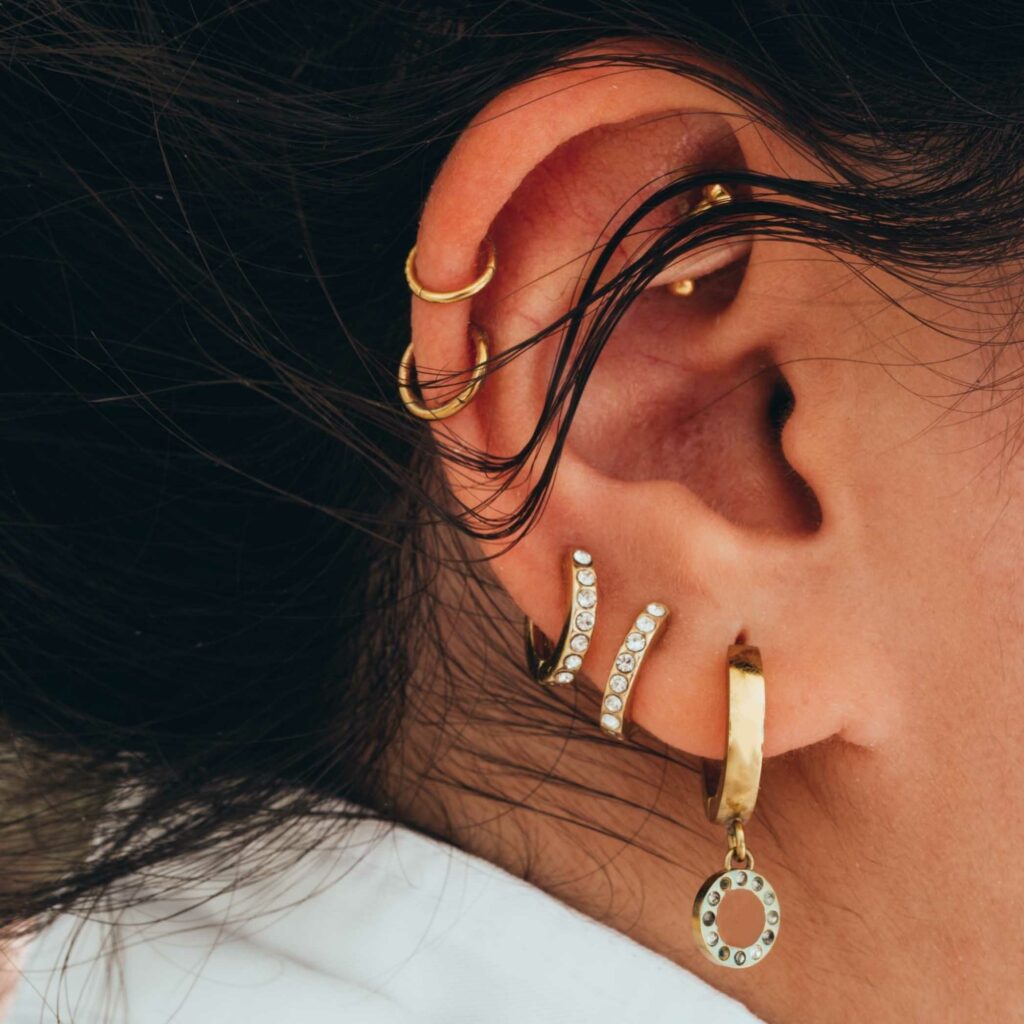
Days 6-10: Adjusting to the Piercing
Reduced swelling and pain
By this point, you should start to notice a decrease in both swelling and pain. The soreness should become more manageable, and the piercing may feel less tender to the touch. These improvements indicate that your body is responding well to the healing process.
Changing jewelry (if necessary)
During the initial healing phase, it’s generally recommended to avoid changing the jewelry. However, if you experience any discomfort or notice the jewelry is causing irritation, consult your piercer before making any changes. They will assess the situation and guide you on the best course of action. Remember, it’s important to be patient and allow the piercing to fully heal before experimenting with different jewelry styles.
Continued aftercare
Although the piercing is well on its way to healing, it’s crucial to continue following your aftercare routine. Clean the piercing using the recommended cleaning solution or mild soap twice a day. Remember to always wash your hands thoroughly before touching the piercing to prevent introducing bacteria. Maintaining proper aftercare will help ensure a successful healing process.
Days 11-15: Routine Maintenance
Cleaning frequency
As the healing progresses, the frequency of cleaning can be reduced. You may continue cleaning the piercing once a day, preferably right after showering when any residue from shampoo or conditioner has been rinsed away. However, if you notice any increase in discharge or the piercing appears irritated, it is advisable to return to the twice-daily cleaning routine.
Checking for proper alignment
During this phase, it’s essential to monitor the alignment of your jewelry. As the swelling decreases, the piercing should appear aligned and centered. If you notice any signs of misalignment or discomfort, seek professional advice from your piercer. They can assess the situation and, if necessary, make adjustments to ensure the proper healing of your piercing.
Avoiding excessive touch or trauma
While you may be excited about your new piercing and tempted to touch or twist the jewelry, it’s crucial to avoid excessive manipulation. Touching the piercing excessively can introduce bacteria, delay the healing process, and increase the risk of infection. If you participate in any activities that may pose a risk to your piercing, such as contact sports or rough physical activities, take precautions to protect the area and prevent trauma.
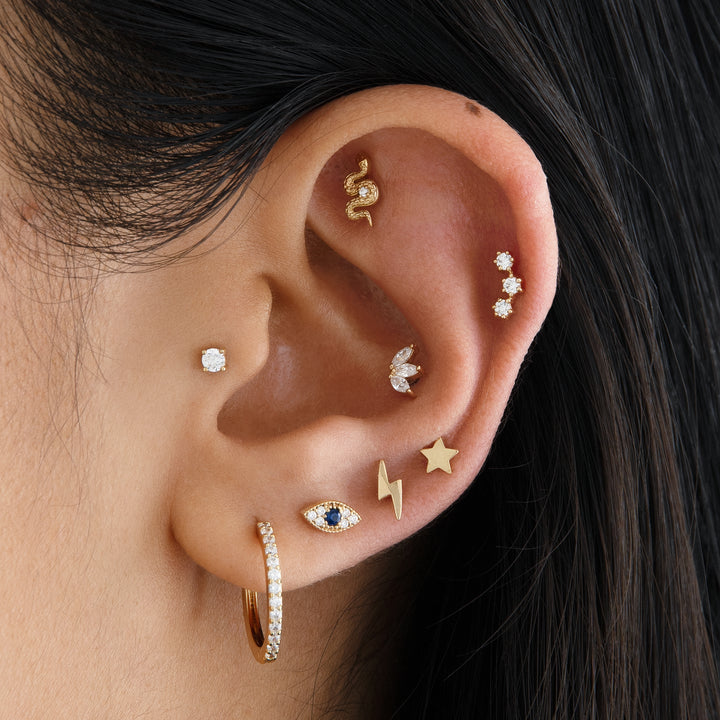
Days 16-20: Dealing with Discomfort
Potential soreness or tenderness
During this phase, you may still experience occasional soreness or tenderness, especially if your piercing is located in a high-mobility area. It’s important to be patient, as everyone heals at a different pace. In case of persistent discomfort, consult your piercer or a healthcare professional who can provide guidance on managing the discomfort and ensuring proper healing.
Avoiding tight clothing or accessories
To provide a conducive healing environment for your piercing, it is advisable to avoid wearing tight clothing or accessories that rub against or put pressure on the piercing. Opt for loose-fitting clothing and be mindful of any pieces of jewelry, hats, helmets, or headphones that may irritate your piercing. Give your piercing ample room to breathe and heal comfortably.
Days 21-25: Signs of Healing
Reduced redness and swelling
By this point, you should notice a significant reduction in redness and swelling, indicating that the healing process is well underway. The piercing site may appear calmer and less inflamed, which is a positive sign of healing.
Formation of crust or scab
It is common for a crust or scab to form around the piercing at this stage of healing. While it may be tempting to pick at it, it’s crucial to resist the urge and allow the body to naturally shed the crust. Picking or prematurely removing the scab can disrupt the healing process and increase the risk of infection.
Proper aftercare maintenance
Continue your regular aftercare routine, ensuring that you clean the piercing as instructed by your piercer. Be gentle when cleaning around the crust or scab, and avoid any harsh scrubbing or pulling. The primary goal is to maintain cleanliness and minimize any potential irritation.
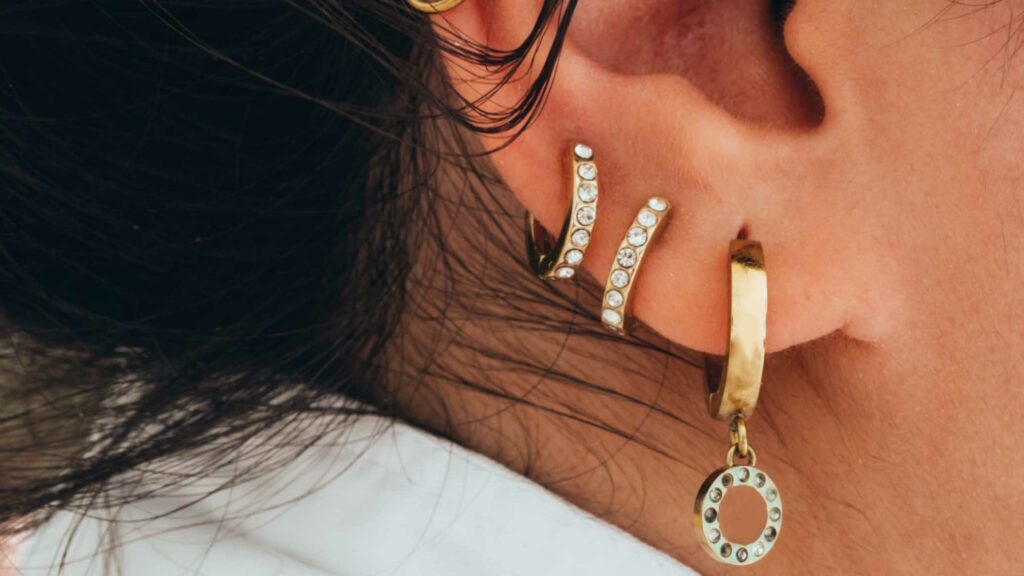
Days 26-30: Final Stages
Fading of initial redness
As you approach the final stages of the first month, you should observe a fading of the initial redness. Your piercing will start to take on a more settled appearance, indicating that healing is nearing completion. However, remember that everyone’s healing process is unique, and it’s normal for some redness to persist beyond the first month.
Tightening of the jewelry
During the healing process, it’s possible for the jewelry to become slightly loose. If you notice any movement or feel the jewelry is not securely in place, contact your piercer for guidance. It’s important to ensure that the jewelry remains properly fixed to avoid any complications or discomfort.
Normalizing cleaning routine
As your piercing continues to heal, you can gradually transition to a regular cleaning routine. It is generally recommended to clean the piercing at least once a week with a mild soap or saline solution. However, always consult with your piercer for personalized advice based on your specific piercing and healing progress.
Month 2: Continuing Care
Transition to regular aftercare
By the second month, your piercing should be well on its way to healing. It’s time to transition to a regular aftercare routine, which usually involves cleaning the piercing once a week. However, it’s important to remain attentive to any changes or concerns and adjust the aftercare routine if needed.
Maintaining cleanliness
Even though your piercing may be healing well, cleanliness should still be a priority. While you can now clean the piercing less frequently, ensure that you continue washing your hands before handling the jewelry or touching the piercing area. Regularly inspect the piercing for any signs of discomfort, redness, or discharge.
Monitoring for signs of infection
While infections are rare, it’s crucial to remain vigilant and monitor your piercing for any signs of infection. Promptly seek professional advice if you notice persistent redness, swelling, severe pain, excessive discharge, or any other unusual symptoms. Early detection and treatment are essential for the well-being of your piercing.
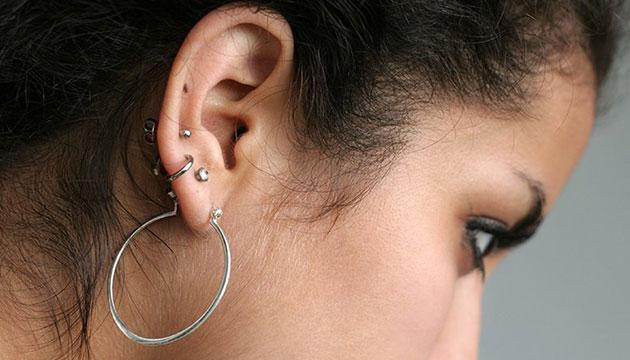
Month 3: Long-Term Maintenance
Periodic cleaning routine
During the third month and beyond, you can further reduce the frequency of cleaning to once every two weeks or as needed. However, maintaining a periodic cleaning routine will help keep your piercing healthy and prevent any potential complications. Remember to always use a mild soap or saline solution and clean the area gently but thoroughly.
Jewelry changes and upgrades
With proper healing and continued care, you can now begin to enjoy the versatility of your piercing. Month three marks an opportune time to consider changing or upgrading your jewelry. Always choose high-quality, hypoallergenic materials to avoid any allergic reactions or discomfort. If you’re unsure about the best types of jewelry for your piercing, consult your piercer for expert advice.
Knowing when to seek professional advice
While most piercings follow a smooth healing process, it’s essential to know when to seek professional advice. If you ever experience persistent discomfort, continuous redness, excessive discharge, or any other concerning symptoms, don’t hesitate to consult your piercer or a healthcare professional. They can provide guidance, evaluate the situation, and potentially recommend the next steps for your piercing.
Month 4 and beyond: Enjoying Your Piercing
Fully healed and settled piercing
By the fourth month, your piercing should be fully healed, settled, and considerably less sensitive. Congratulations on achieving this milestone! You can now enjoy the full benefits of your piercing.
Freedom to change jewelry styles
With a fully healed piercing, you have the freedom to experiment with different jewelry styles and designs that match your personal style and preferences. From elegant studs to bold hoops, the possibilities are endless. Just ensure that the jewelry is sterile, of high-quality materials, and properly fitted to maintain the health of your piercing.
Appreciating your personal style
Your new piercing enhances your personal style and allows you to express yourself in unique ways. Embrace your newfound accessory and appreciate the journey you’ve embarked upon. Remember to continue caring for your piercing, staying attuned to any changes or signs of concern. Your piercing is a reflection of your individuality and a testament to your commitment to self-expression.
As with any medical or cosmetic procedure, it’s crucial to follow the advice of your piercer and seek professional help if needed. The healing journey may vary from person to person, but with patience, diligence, and proper aftercare, you can enjoy your piercing for years to come. Congratulations again, and may your piercing be a constant reminder of your personal style and confidence.

